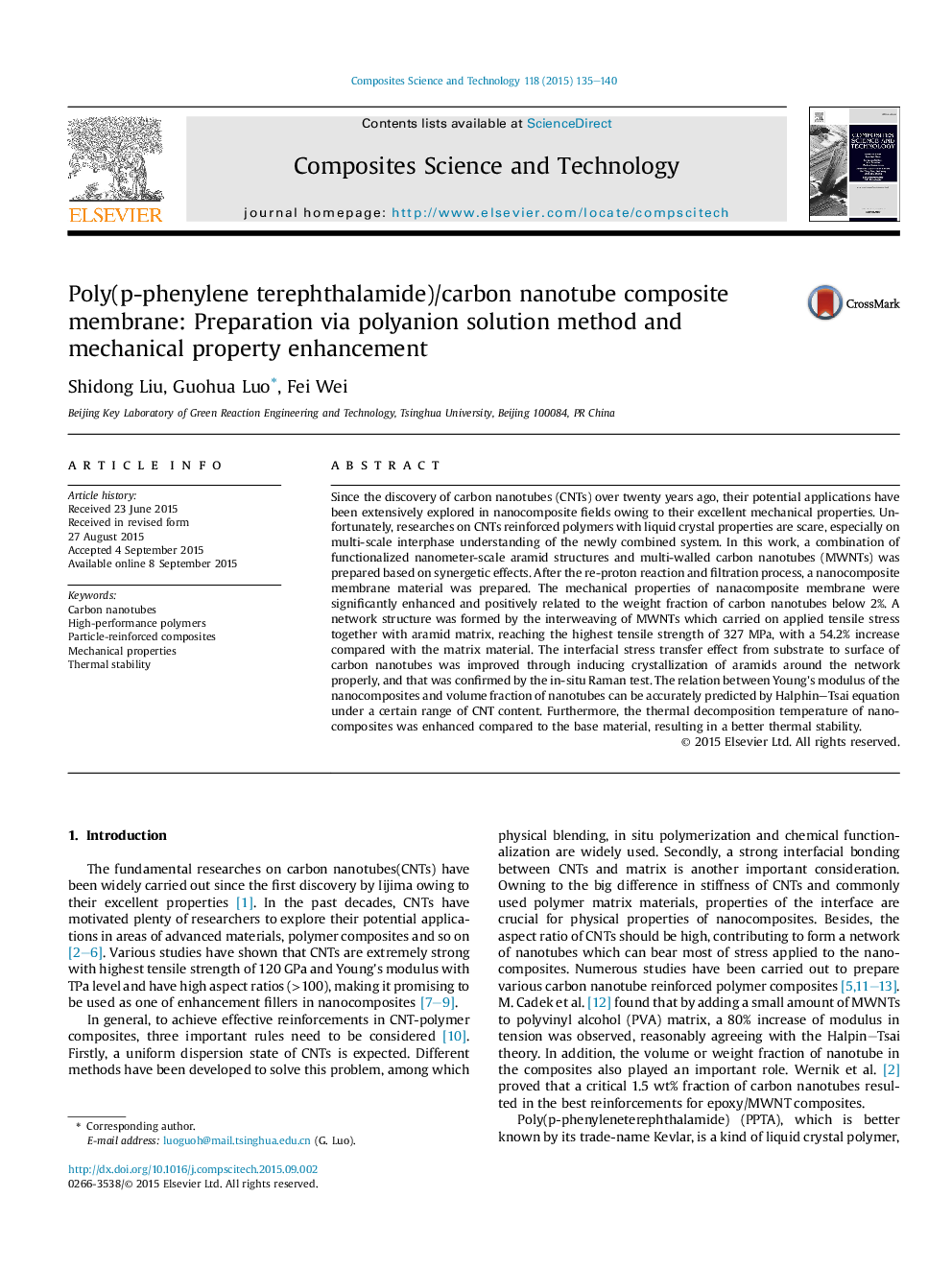| Article ID | Journal | Published Year | Pages | File Type |
|---|---|---|---|---|
| 7215282 | Composites Science and Technology | 2015 | 6 Pages |
Abstract
Since the discovery of carbon nanotubes (CNTs) over twenty years ago, their potential applications have been extensively explored in nanocomposite fields owing to their excellent mechanical properties. Unfortunately, researches on CNTs reinforced polymers with liquid crystal properties are scare, especially on multi-scale interphase understanding of the newly combined system. In this work, a combination of functionalized nanometer-scale aramid structures and multi-walled carbon nanotubes (MWNTs) was prepared based on synergetic effects. After the re-proton reaction and filtration process, a nanocomposite membrane material was prepared. The mechanical properties of nanacomposite membrane were significantly enhanced and positively related to the weight fraction of carbon nanotubes below 2%. A network structure was formed by the interweaving of MWNTs which carried on applied tensile stress together with aramid matrix, reaching the highest tensile strength of 327Â MPa, with a 54.2% increase compared with the matrix material. The interfacial stress transfer effect from substrate to surface of carbon nanotubes was improved through inducing crystallization of aramids around the network properly, and that was confirmed by the in-situ Raman test. The relation between Young's modulus of the nanocomposites and volume fraction of nanotubes can be accurately predicted by Halphin-Tsai equation under a certain range of CNT content. Furthermore, the thermal decomposition temperature of nanocomposites was enhanced compared to the base material, resulting in a better thermal stability.
Keywords
Related Topics
Physical Sciences and Engineering
Engineering
Engineering (General)
Authors
Shidong Liu, Guohua Luo, Fei Wei,
